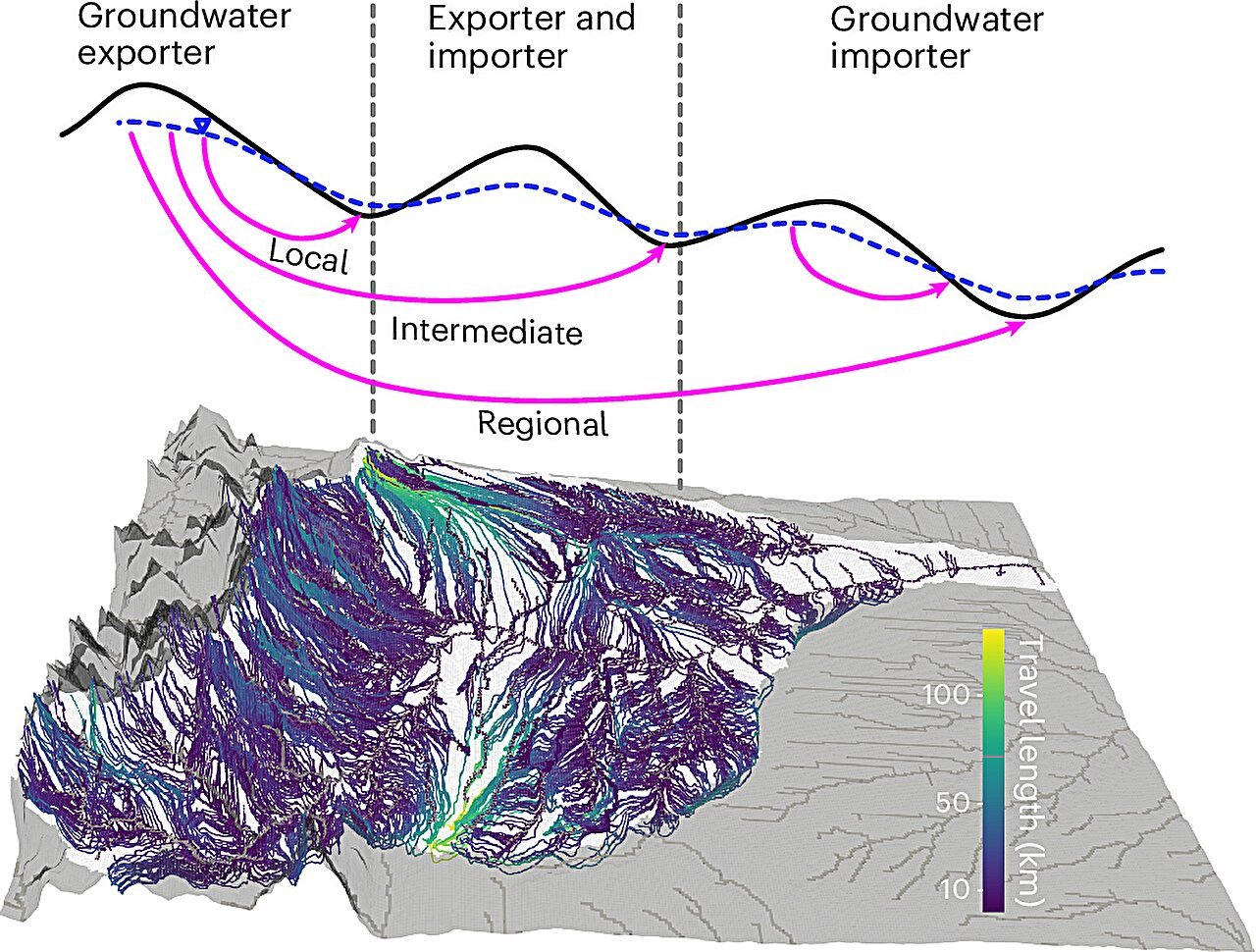Researchers from Princeton University and the University of Arizona have made a groundbreaking discovery in the study of groundwater. Their work has resulted in the creation of a sophisticated simulation that maps the movement of underground water across an entire continent. After three years of meticulous research, this team has managed to uncover the previously hidden journeys of rainwater and melted snow, tracing their subterranean paths from surface entry to their eventual reemergence in freshwater streams. What is particularly striking about these findings is the vast scope of these pathways—some extending up to 100 miles—and the immense time spans involved, with water spending anywhere from a decade to 100,000 years beneath the surface.
Published in the journal Nature Water, this research challenges existing perceptions of how groundwater behaves and interacts with surface water systems. Historically, it was thought that rainfall and snowmelt remained relatively local in their underground journeys and that water from the deepest aquifers was largely isolated from surface streams. The simulation, however, paints a very different picture. It reveals that water flows through intricate networks far below the surface, connecting to streams and rivers in ways that were previously unknown. More than half the water flowing in U.S. streams and rivers originates from deep aquifers, overturning long-held assumptions about the separation of deep and shallow groundwater systems.
This ambitious simulation spans the entire continental United States, along with parts of Canada and Mexico, and covers an astounding area of over 3 million square miles (7.85 million square kilometers). By integrating high-resolution hydrological data, the research team was able to trace the movement of water across these vast distances. The researchers included Reed Maxwell, William and Edna Macaleer Professor of Engineering and Applied Science at Princeton University, along with his colleague Chen Yang, now at Sun Yat-sen University in China, and Laura Condon, a professor at the University of Arizona. Together, they have reshaped the understanding of groundwater dynamics.
One of the most remarkable findings is the realization that groundwater travels far greater distances than was previously imagined. In the Midwest, where the terrain shifts from mountains to plains, groundwater flows can span hundreds of kilometers. For example, one major groundwater flow tracked at the base of the Rocky Mountains extended for 148 miles (238 kilometers). These revelations highlight the extensive interconnection of watersheds, with nearly 90% of U.S. watersheds receiving and passing water to neighboring basins. This network underscores how water doesn’t adhere to administrative or geographical boundaries, flowing seamlessly across regions.
The implications of this research are profound. Groundwater accounts for 99% of the world’s unfrozen freshwater, making it an essential resource for sustaining human life and ecological systems. In the United States alone, groundwater provides drinking water to 145 million people and irrigates nearly 60% of agricultural lands. Yet, this vital resource is under severe threat due to overextraction, pollution, and climate change. Understanding how groundwater moves, where it originates, and how it connects to surface water systems is critical for managing this resource sustainably.
One of the practical applications of this research lies in its potential to track and mitigate pollution. The discovery that groundwater can flow over such long distances has significant implications for understanding how pollutants travel. Contaminants like nitrates and per- and polyfluoroalkyl substances (PFAS)—often called “forever chemicals” due to their persistence—can take these extended journeys before reaching streams. This complicates efforts to manage and clean up polluted water supplies. “Interconnections between the watersheds aren’t just important for streamflow,” explains Maxwell. “This also tells us how long contamination will persist in groundwater.” The extended timescales and distances involved mean that pollutants can remain in the system for much longer than previously understood, requiring new strategies for remediation.
Another major finding of the study is the role of deep aquifers in contributing to surface water systems. Deep groundwater, found at depths of 10 to 100 meters below the surface, was found to supply more than half of the baseflow in 56% of the subbasins analyzed. This is particularly evident in areas with dramatic changes in elevation, such as the Rocky Mountains and the Appalachian mountain range. These deep contributions not only sustain streams but also highlight how surface and groundwater systems are more interconnected than previously thought.
Beyond these ecological and hydrological insights, the research also provides a powerful tool for addressing some of the most pressing challenges of our time, including climate change. As rising temperatures and shifting precipitation patterns alter the global water cycle, the ability to model and predict groundwater dynamics becomes increasingly crucial. This study equips researchers and policymakers with the data and methodologies needed to anticipate changes in water availability, manage droughts, and safeguard water supplies for future generations.
The scale of the research is as impressive as its findings. By tracking water through one of the most comprehensive simulations to date, the researchers have opened up new avenues for understanding how water moves through our planet’s intricate systems. This is particularly important given the alarming rate at which groundwater is being depleted. The tools and insights developed in this study could play a crucial role in managing water resources more effectively, ensuring their availability for both human consumption and ecological health.
The study also underscores the value of interdisciplinary collaboration in tackling complex scientific challenges. Drawing on expertise from hydrology, engineering, environmental science, and advanced computational modeling, the team was able to produce results that push the boundaries of what is possible in groundwater research. Their work exemplifies how combining diverse perspectives can lead to groundbreaking discoveries with real-world impact.
Reference: Chen Yang et al, Unravelling groundwater–stream connections over the continental United States, Nature Water (2025). DOI: 10.1038/s44221-024-00366-8
Think this is important? Spread the knowledge! Share now.
